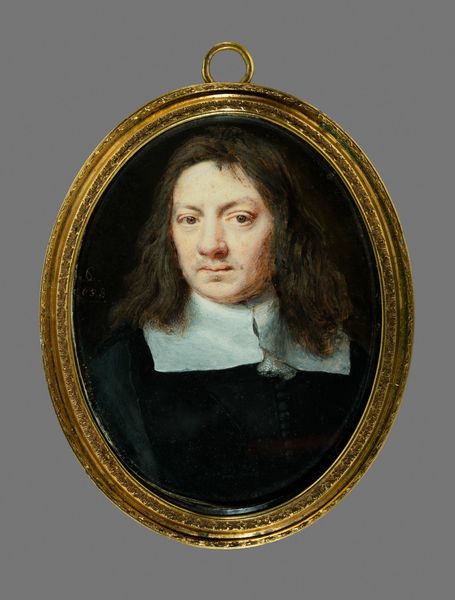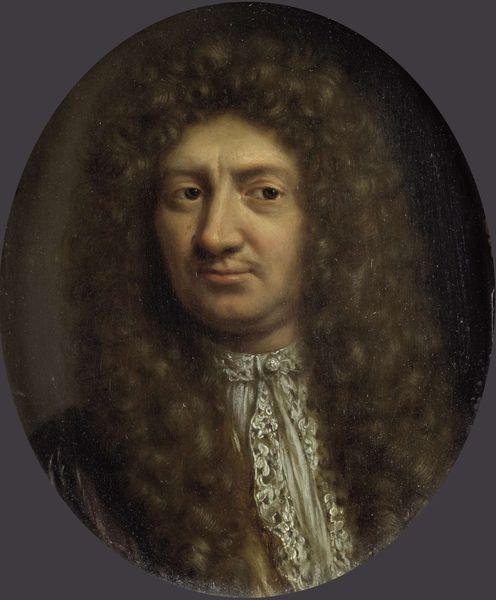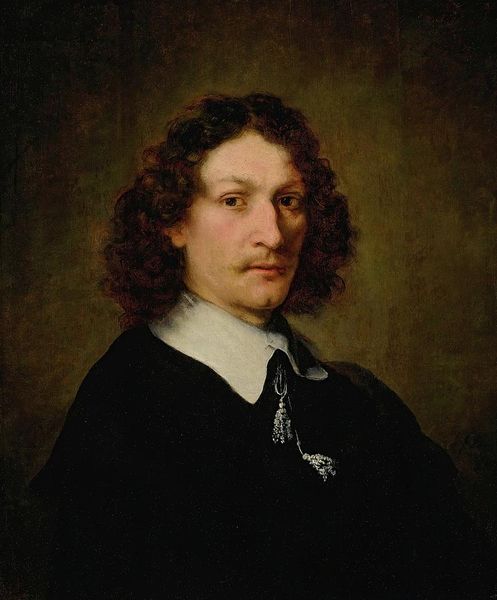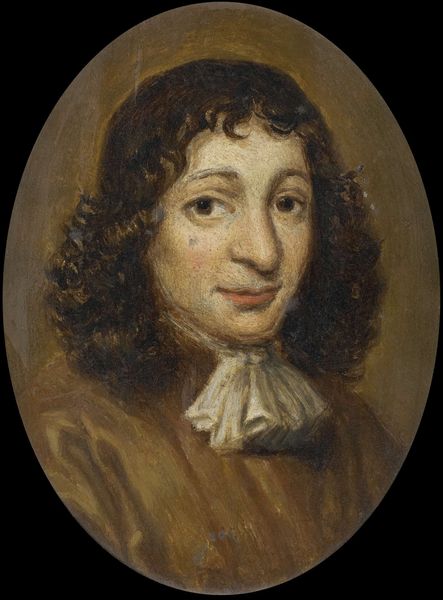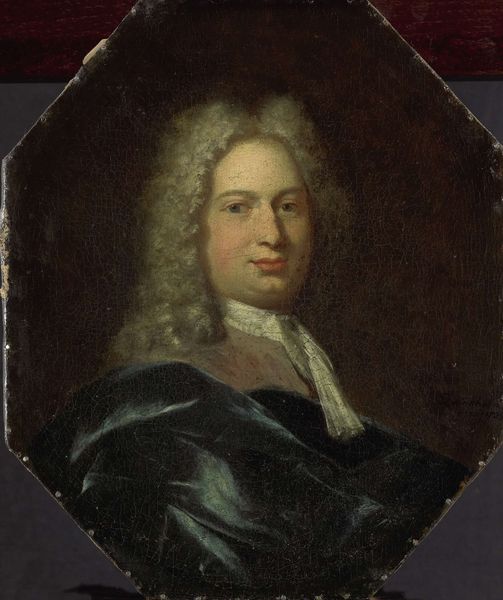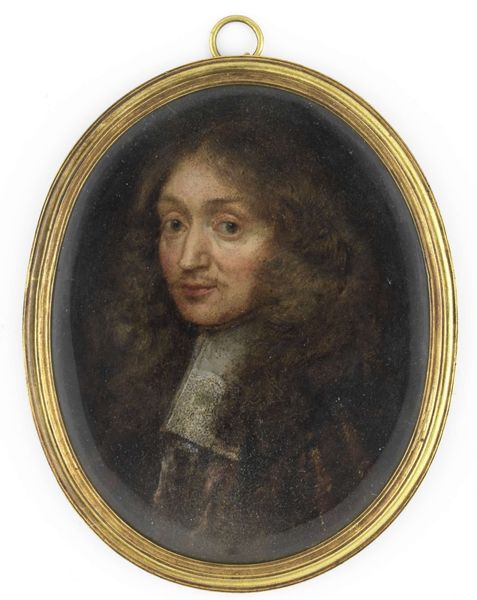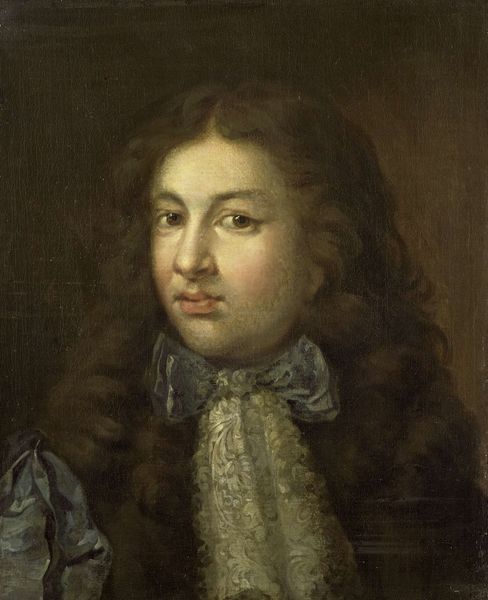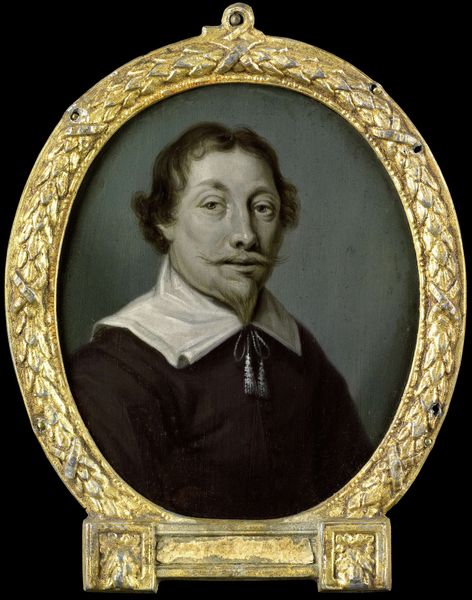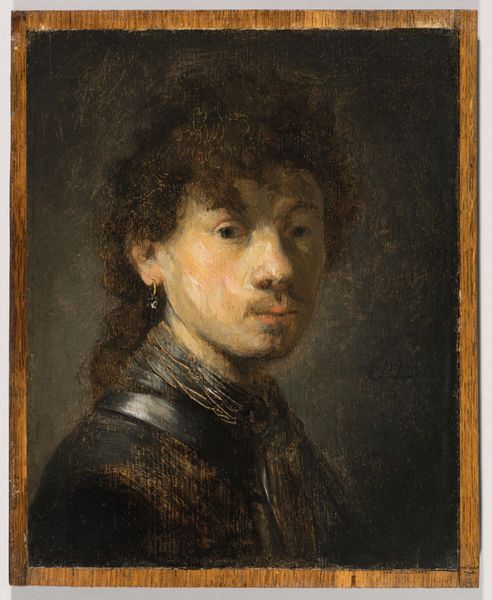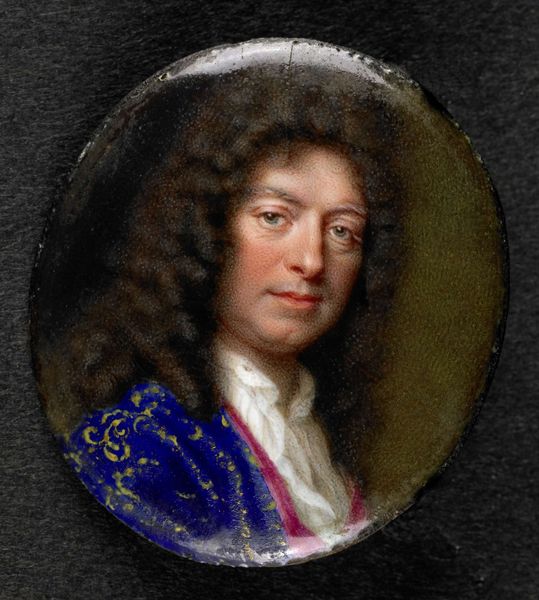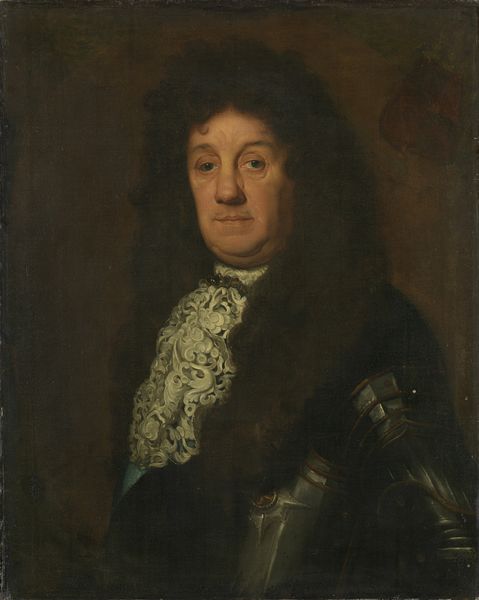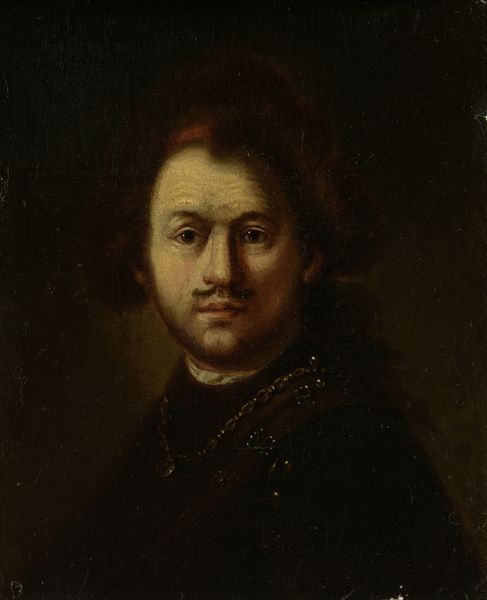
painting, oil-paint
#
portrait
#
baroque
#
portrait
#
painting
#
oil-paint
Dimensions: height 34.5 cm, width 29 cm, depth 5.5 cm
Copyright: Rijks Museum: Open Domain
Editor: Here we have Frans van der Mijn's "Portrait of George van der Myn, Painter," likely completed between 1750 and 1763. It is currently held at the Rijksmuseum. It’s an oil painting and it strikes me as rather muted in color, almost somber. What do you notice when you examine it closely? Curator: Observe the painting’s formal elements, starting with the artist’s masterful rendering of light and shadow. Van der Mijn uses chiaroscuro to model the face, creating volume and depth. Consider how the artist deployed a limited palette. Do you see how these darker tones, juxtaposed with the light on the subject’s face, contribute to the overall mood? Editor: Yes, the light definitely draws my eye to his face, making it the focal point. Curator: Precisely. The oval composition contains the subject within a defined, almost constricting, boundary. What meaning can you derive from this constraint? Is it a way of framing the sitter? An assertion of visual and social status? The very application of oil-paint, consider the density and how it obscures texture... Editor: It's interesting how those formal constraints you pointed out actually give the painting a sense of intimacy despite the darkness. I wonder, is the mood due to a technique meant to represent George's somber, artistic character? Curator: Character is certainly an effect of art, but our task here is to recognize how the formal elements– line, color, composition, shape, texture – achieve it, don't you think? What does this style bring to portraiture more broadly? Editor: That makes sense. I suppose thinking about it this way provides a solid foundation to approach all types of art. Thank you.
Comments
No comments
Be the first to comment and join the conversation on the ultimate creative platform.
